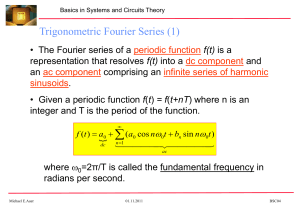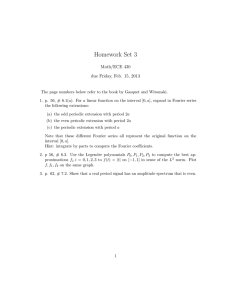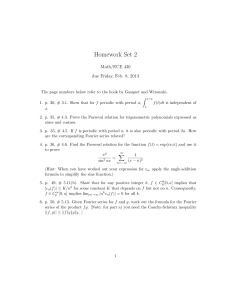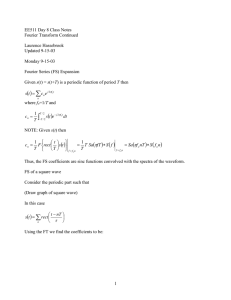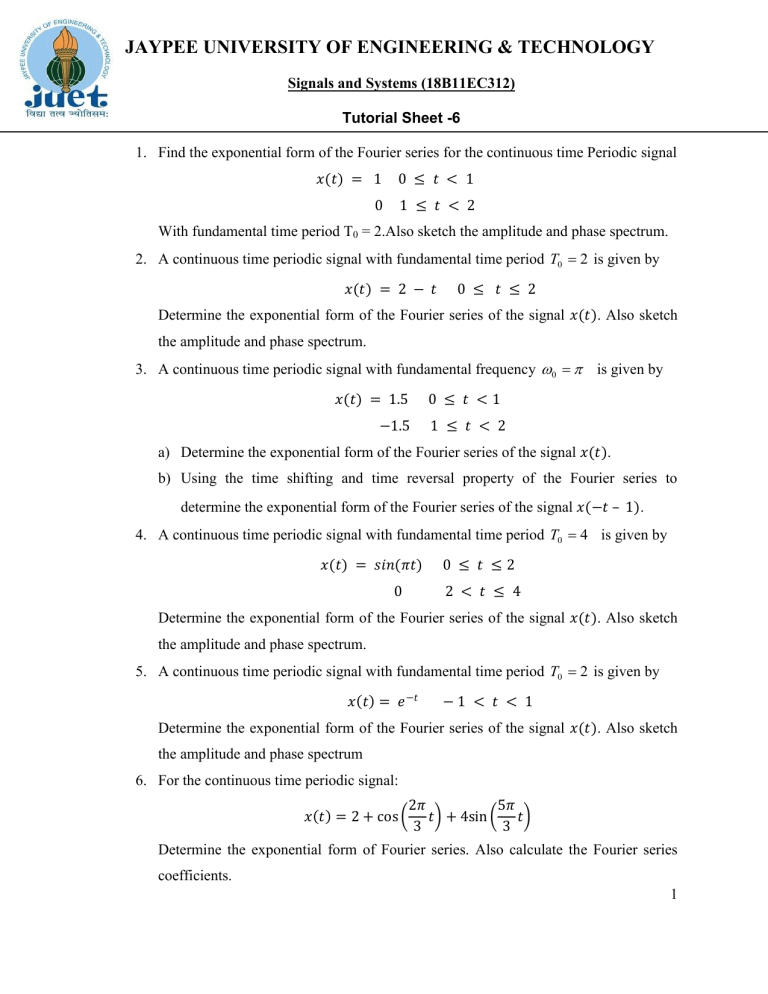
JAYPEE UNIVERSITY OF ENGINEERING & TECHNOLOGY Signals and Systems (18B11EC312) Tutorial Sheet -6 1. Find the exponential form of the Fourier series for the continuous time Periodic signal 𝑥(𝑡) = 1 0 ≤ 𝑡 < 1 0 1 ≤ 𝑡 < 2 With fundamental time period T0 = 2.Also sketch the amplitude and phase spectrum. 2. A continuous time periodic signal with fundamental time period T0 2 is given by 𝑥(𝑡) = 2 − 𝑡 0 ≤ 𝑡 ≤ 2 Determine the exponential form of the Fourier series of the signal 𝑥(𝑡). Also sketch the amplitude and phase spectrum. 3. A continuous time periodic signal with fundamental frequency 0 𝑥(𝑡) = 1.5 −1.5 is given by 0 ≤ 𝑡 <1 1 ≤ 𝑡 < 2 a) Determine the exponential form of the Fourier series of the signal 𝑥(𝑡). b) Using the time shifting and time reversal property of the Fourier series to determine the exponential form of the Fourier series of the signal 𝑥(−𝑡 – 1). 4. A continuous time periodic signal with fundamental time period T0 4 is given by 𝑥(𝑡) = 𝑠𝑖𝑛(𝜋𝑡) 0 0 ≤ 𝑡 ≤2 2 < 𝑡 ≤ 4 Determine the exponential form of the Fourier series of the signal 𝑥(𝑡). Also sketch the amplitude and phase spectrum. 5. A continuous time periodic signal with fundamental time period T0 2 is given by 𝑥 𝑡 = 𝑒 −𝑡 −1 < 𝑡 < 1 Determine the exponential form of the Fourier series of the signal 𝑥(𝑡). Also sketch the amplitude and phase spectrum 6. For the continuous time periodic signal: 𝑥 𝑡 = 2 + cos 2𝜋 5𝜋 𝑡 + 4sin 𝑡 3 3 Determine the exponential form of Fourier series. Also calculate the Fourier series coefficients. 1
